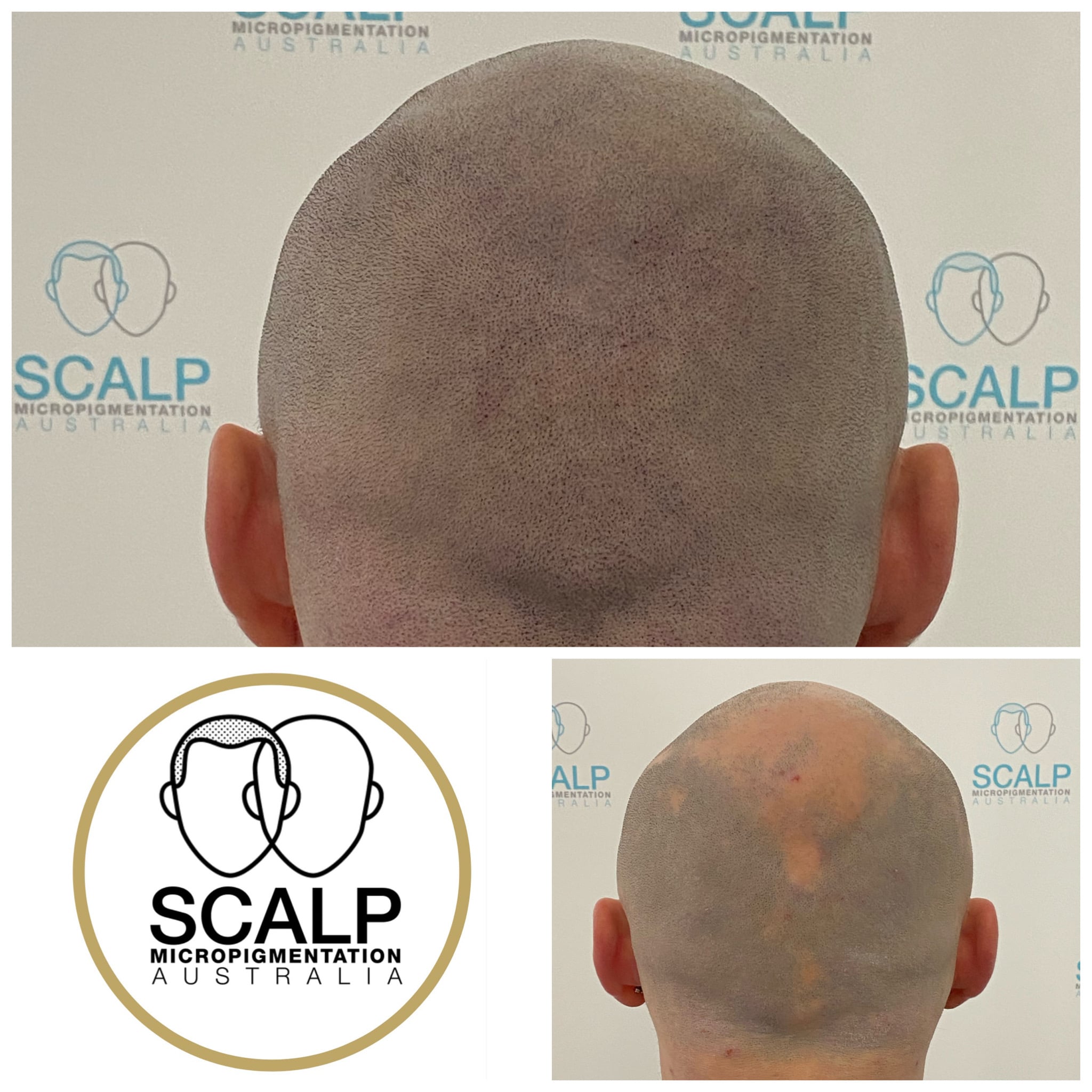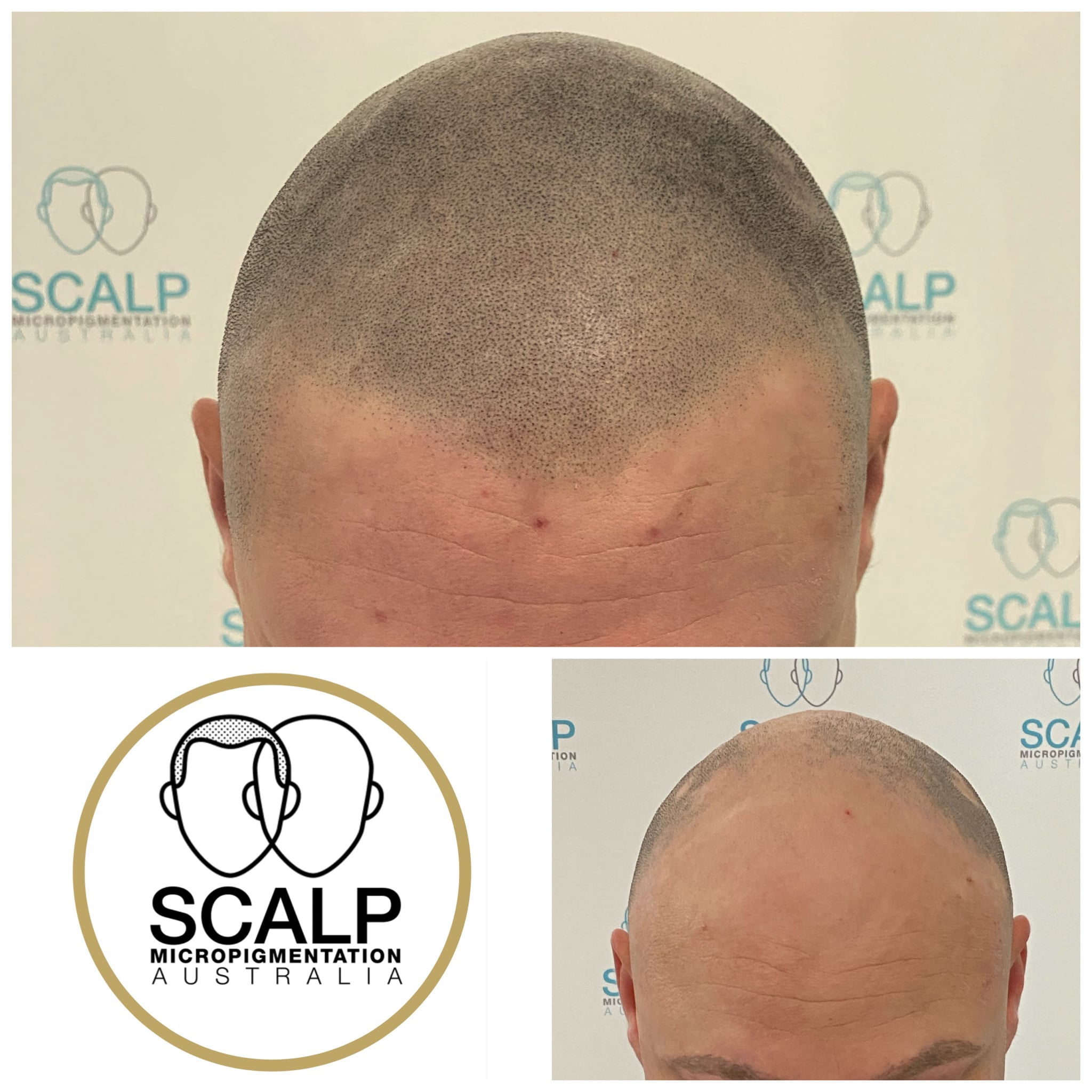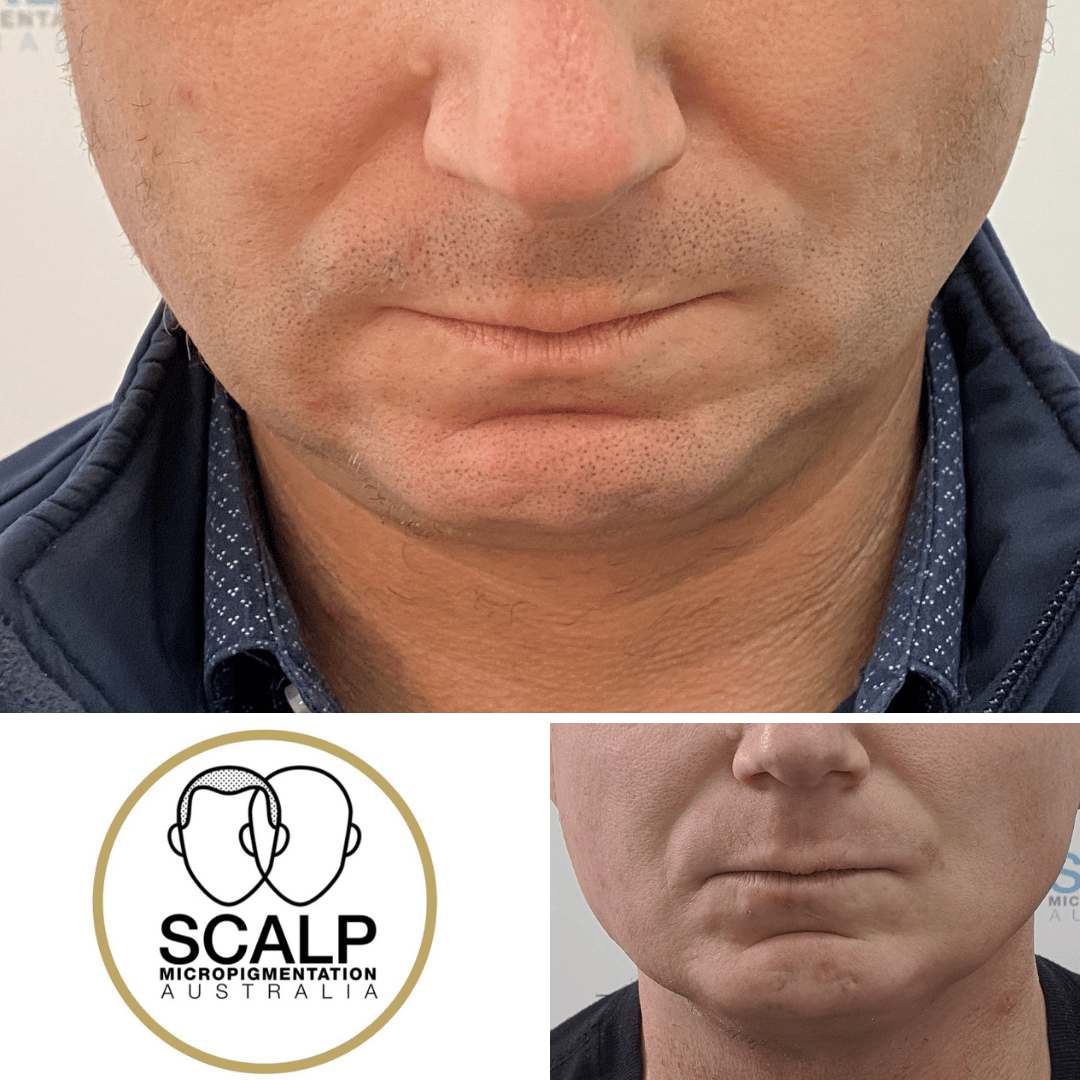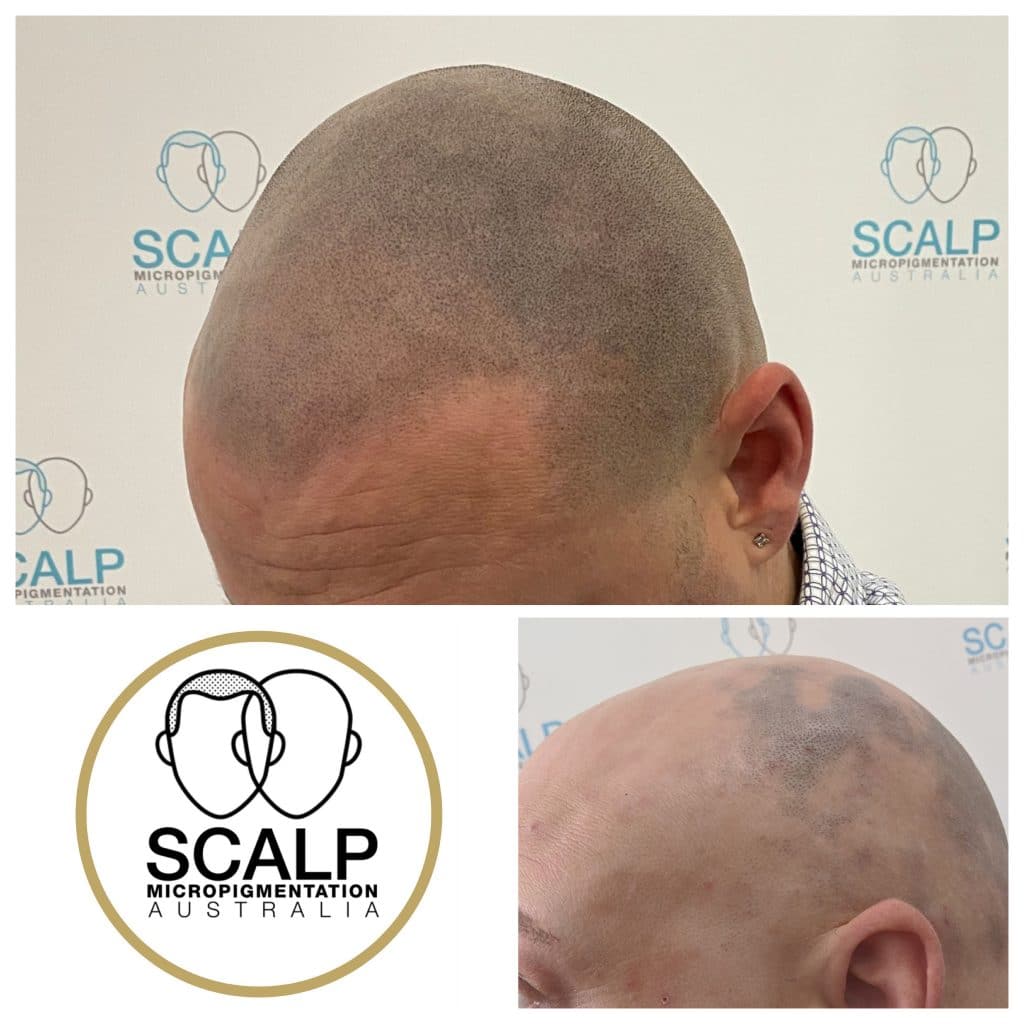
Scalp MicroPigmentation can be utilised in a variety of ways, greatly expanding cosmetic treatment options for Alopecia Areata and other types of Alopecia hair loss.
Alopecia is the general word used meaning ‘hair loss’ there are many different types of Alopecia, the first and most common is Alopecia Areata.
Alopecia Areata
Alopecia Areata is characterised by small circles of hair loss either on the scalp, beard or part of the eyebrows or eyelashes. Sometimes this hair spontaneously re-grows in the first year, others progress into other types of Alopecia.
Alopecia Areata is thought to be an autoimmune disease. This occurs when your own immune system damages healthy cells in your body. The immune system makes white blood cells (lymphocytes) and antibodies to protect against foreign objects such as bacteria, viruses, and other germs. In autoimmune disease, the immune system mistakes part or parts of the body as foreign.
In people with Alopecia Areata, many white blood cells gather around the affected hair roots (hair follicles) which are mistaken as foreign. This causes some mild inflammation which leads in some way to hairs becoming weak and falling out to cause the bald patches.
Alopecia Areata hair regrowth treatment includes topical or steroid injections, platelet rich plasma therapy, minoxidil therapy and camouflaging options such as Scalp MicroPigmentation.
For early thinning or balding, styling manipulation is the first step taken by many eg. comb-forward or bouffant or styling over a scarred Alopecia Areata area.
Alopecia, Alopecia Areata, Alopecia Totalis or female genetic unpatterned Alopecia generally reflect reduced hair densities by different degrees and distribution.
Camouflage for Alopecia
Styling options evolve over a long period of time as hair loss increases. Many Caucasians with chronic Alopecia may change their hair colour from dark to light, effectively reducing the contrast between a dark hair colour and a lighter skin colour. These changes can camouflage and diffuse areas of localised Alopecia.
Many temporary concealers such as hair fibres interact with everyday life whether it be shedding on clothing or bedspreads, running in the rain or with perspiration. These can become costly over a period of time.
Alopecia Reductions
Alopecia Reductions – these scars usually appear in many different shapes across the top of the scalp – applying Scalp Micropigmentation to these scars can camouflage them, giving the patient hair freedom again.
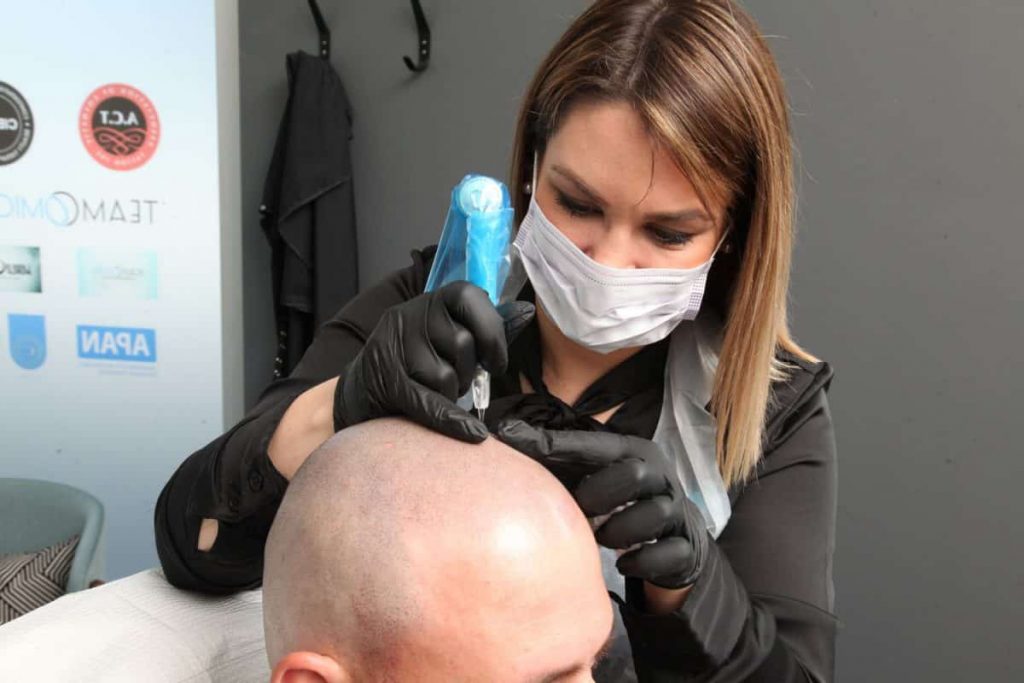
Traction Alopecia occurs when a person wears their hair very tight, the continued stress and tension on the hair follicles over a long period of time results in hair loss.
Many males have this form of hair loss that have worn their hair in a bun pulled tight for many years – commonly under a turban.
Traction Alopecia
We are seeing a growing trend in clients seeking help for their Traction Alopecia. This form of hair loss in common with African American women who wear their hair braided very tightly. Scalp MicroPigmentation is a hair loss solution to camouflage the hair loss – the hair tattoo is placed between either repaired hair transplant grafts or amongst the hair remaining to give the illusion of thickness back.
In the slide show (left), you can see that the constant hair pulling to the temples has resulted in permanent loss, our client underwent a hair transplant to the front hairline but needed Scalp MicroPigmentation as his final hair loss treatment.
We used Scalp MicroPigmentation to give the shape back to his temples to re-frame his face.
Alopecia Universalis is the name given to total hair loss.
Alopecia Universalis & Totalis
SMP can give back a patient’s confidence – recreating a new hairline and shape over the whole scalp.
This is a large area to cover – multiple sessions are required to complete comfortably for both the client and hair tech.
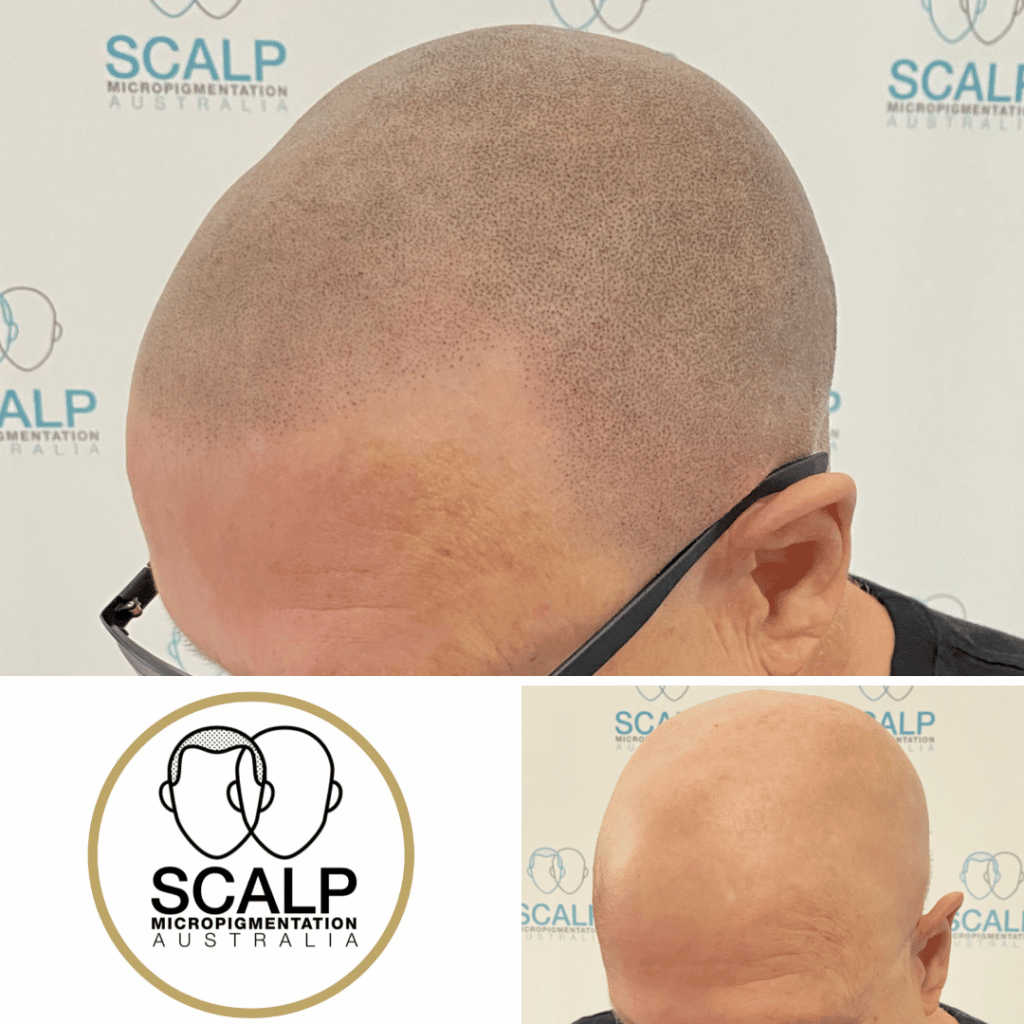
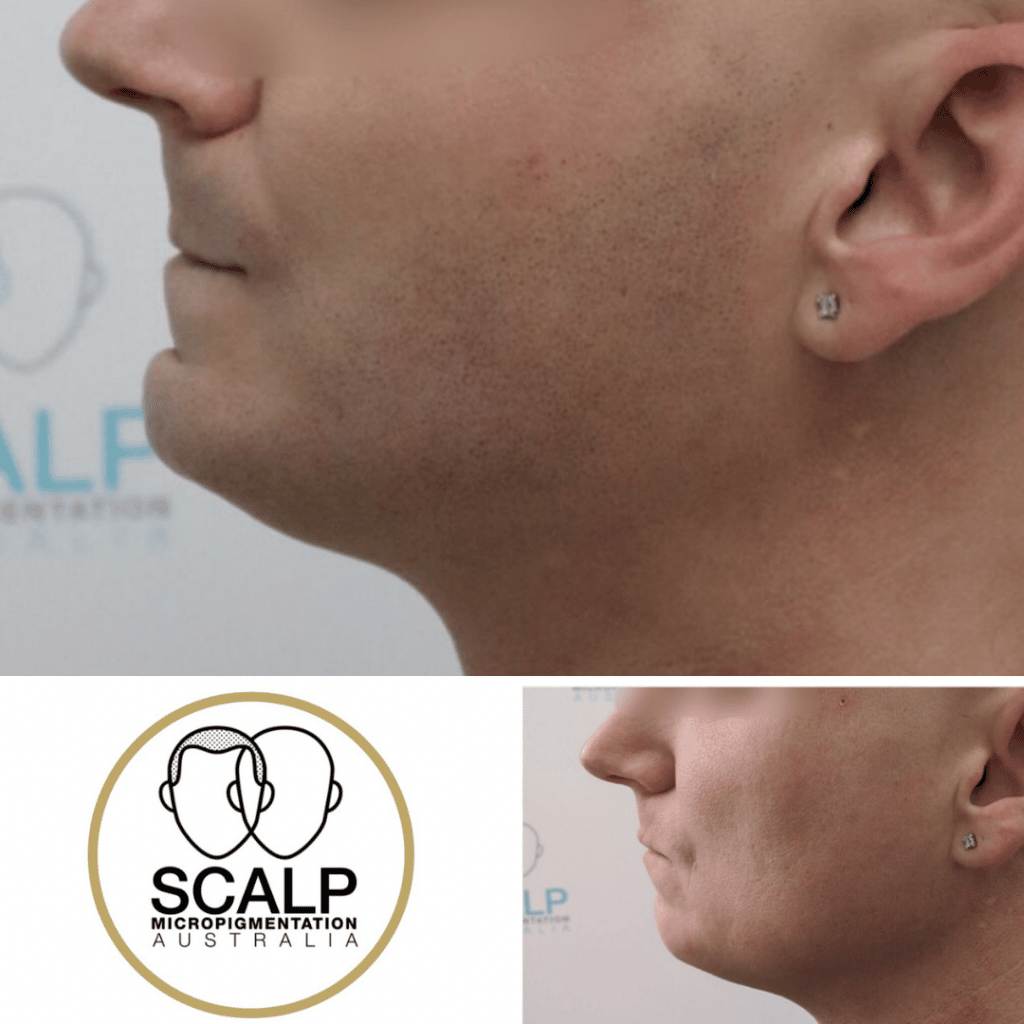
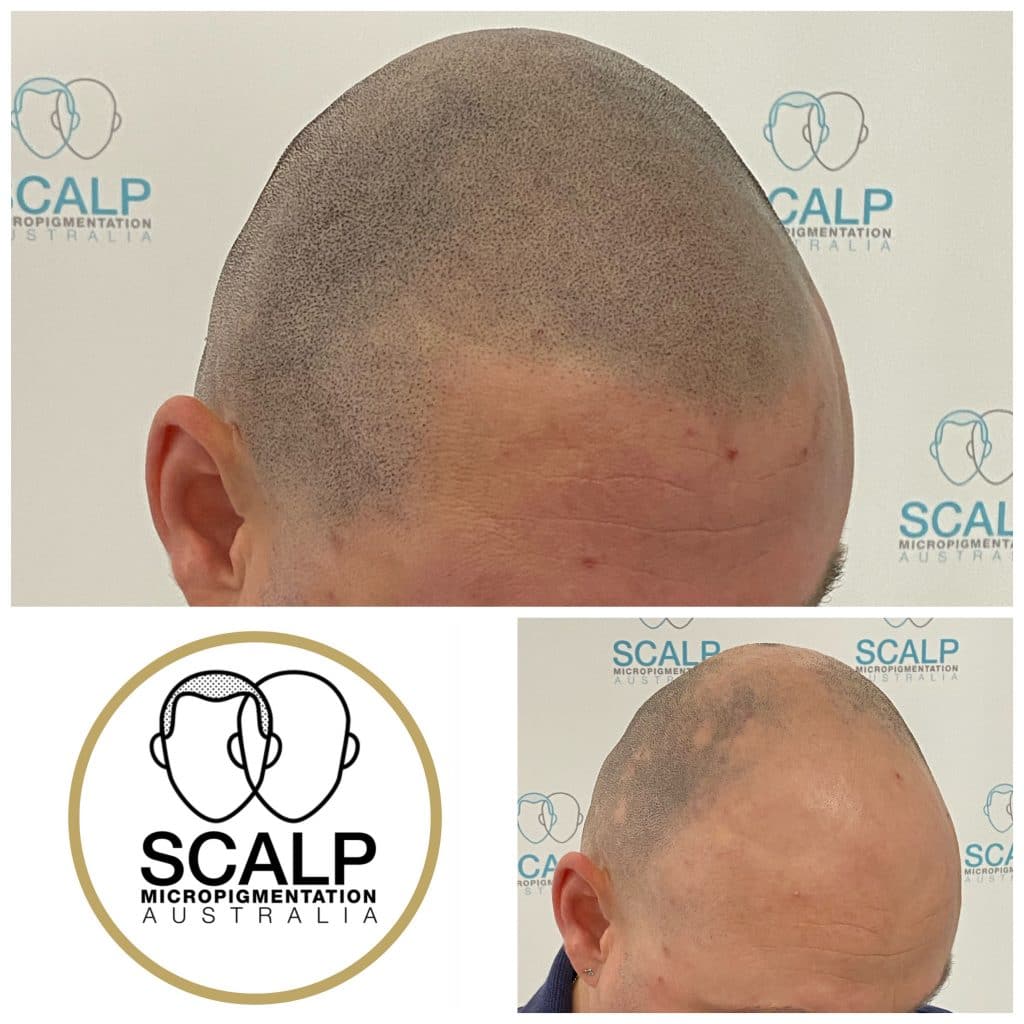
Lichens Planopilaris and Scarring Alopecia is more common in women than men and usually has a peek onset at the age of 50.
Lichens Planopilaris is a rare inflammatory scalp condition which causes hair loss in a patchy distribution commonly on the back of the scalp close to the neck but also the front and sides of the scalp.
Lichens Planopilaris and Scarring Alopecia
Lichen Planopilaris causes hair loss by destroying the hair follicles and causing scarring in these areas. Unfortunately, Lichen Planopilaris usually worsens over time.
The main sign of Lichen Planopilaris is patchy hair loss on the scalp. The underlying tissue is white, but the edges of the patch can still have inflammation if the condition is active showing red or purple or scaling around the remaining hair follicles. The patch is often smooth because the underlying hair follicles have been destroyed.
This form of hair loss is unfortunately permanent. Once the condition is inactive, we can treat this hair loss condition using Scalp MicroPigmentation to camouflage the hair loss. Lichens Planopilaris treatment with Scalp MicroPigmentation is a safe and effective way to camouflage out the white patches of skin making the hair appear fuller.


